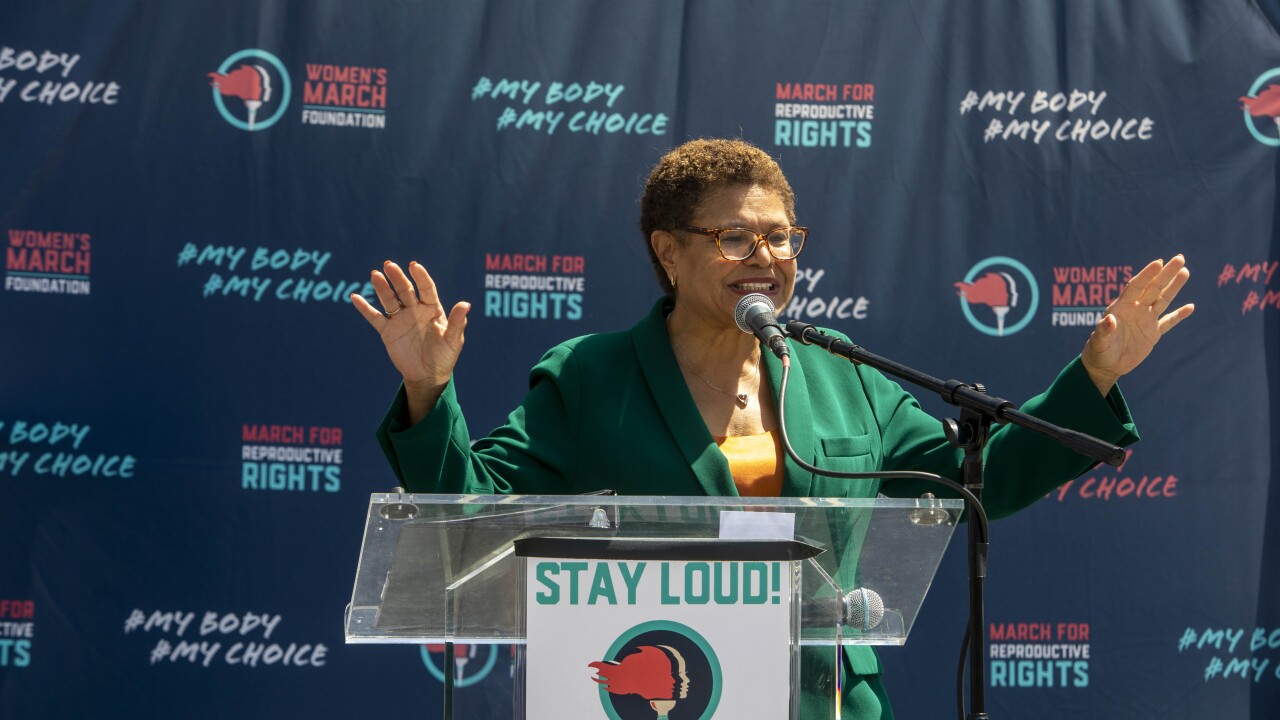CHICAGO — Fitch Ratings this week downgraded $572 million of sales tax-backed debt issued by Hamilton County, Ohio, as it faces a steep decline in the revenue source that funds general operations and its two major sports stadiums.
The rating action comes as the Hamilton County board signed off on a $209 million general fund budget for 2010 that anticipates a 3.8% decline in sales tax revenue — the fund’s largest revenue source.
Fitch downgraded to A-plus from AA $20 million of outstanding senior-lien sales tax bonds and downgraded to A from A-plus $552 million of junior-lien sales tax bonds. The outlook is stable at the lower rating.
The sales tax debt is the only county debt rated by Fitch. It does not rate Hamilton’s general obligation debt.
Hamilton County has a 6.5% sales tax, of which 5.5% goes to Ohio, 0.5% goes to the stadium fund, and 0.5% goes to the county general fund. Voters have twice since 2006 defeated the county’s efforts to raise its sales tax.
In 1998 the county sold $344 million of debt to pay for construction of Paul Brown Stadium, where the National Football League’s Cincinnati Bengels play, and in 2000 issued $330 million to pay for Great American Field, home to Major League Baseball’s Cincinnati Reds.
Since then, the county has seen its sales tax revenue fall far short of original expectations that debt payment schedules were built around. The declines have led to a possible deficit of $13.8 million in the fund next year with warnings from county officials that it could grow to nearly $90 million by 2014 without action.
Original projections assumed 3% growth in sales tax revenue, said Karen McFarland, the county’s debt manager. “It’s really easy today to look back and say, 'Boy, was that stupid,’ but if you were sitting here at that time in 1997 that [3% growth] was conservative,” she said.
As of 1997, the average annual rate of growth for sales tax revenue over its 30-year life was 7.6%, according to McFarland. “At the time, we only had two years out of 30 where it dropped below 3%,” she said. “It’s been a huge drop since.”
With one month left in fiscal 2009, officials are expecting sales tax revenue to decline a total of 7%.
“It’s unreal,” McFarland said. “We’ve never seen that.”
She attributed the decline, which began in 2000, to a number of factors, including shoppers heading outside the county, increased Internet sales, and a weak economy.
In its report, Fitch notes that despite the declines, coverage on the sales tax bonds remains strong.
Hamilton County pledges all of the half-cent sales tax revenue to cover the stadium debt, though in practice it devotes 30% of the revenue to finance an annual property tax rollback promised to residents as part of the original campaign to persuade voters to approve the tax hike in 1996.
Next year’s debt service payments total $27.6 million, with sales tax revenue collections totaling around $57 million, assuming a 3.8% decline. Under a 2006 refunding, the county’s debt payments will jump starting in 2013, when they will total $39 million annually. Assuming tax revenue stays flat, collections will still total roughly $57 million, providing just under two times coverage, McFarland noted.
“The debt service is not in jeopardy,” she said.
Meanwhile county officials Wednesday presented the board with a number of options to whittle down the stadium fund’s deficit. Options renegotiating its leases with the Bengels and the Reds and renegotiating its payment in lieu of taxes agreement with Cincinnati Public Schools.
Other options include transferring a chunk of general fund money to the sales tax fund and raising various taxes and fees, including eliminating the property tax rollback, and imposing so-called sin taxes on products like cigarettes.
A recently passed statewide measure allowing casino gambling in the state means that Hamilton County will be in line for new revenues starting when the casinos open, tentatively scheduled for 2012, McFarland said.
“We’re not going to have one option that will solve the problem; it will be a piecemeal solution,” she said. “And I don’t think it will solve the problem all the way out to 2032 when the debt retires, and I don’t think we want it to. Our sales tax might start to grow again.”
Moody’s Investors Service rates the senior-lien debt Aa3 and the subordinate-lien debt A2. Standard & Poor’s maintains an underlying A-minus rating on the debt.





